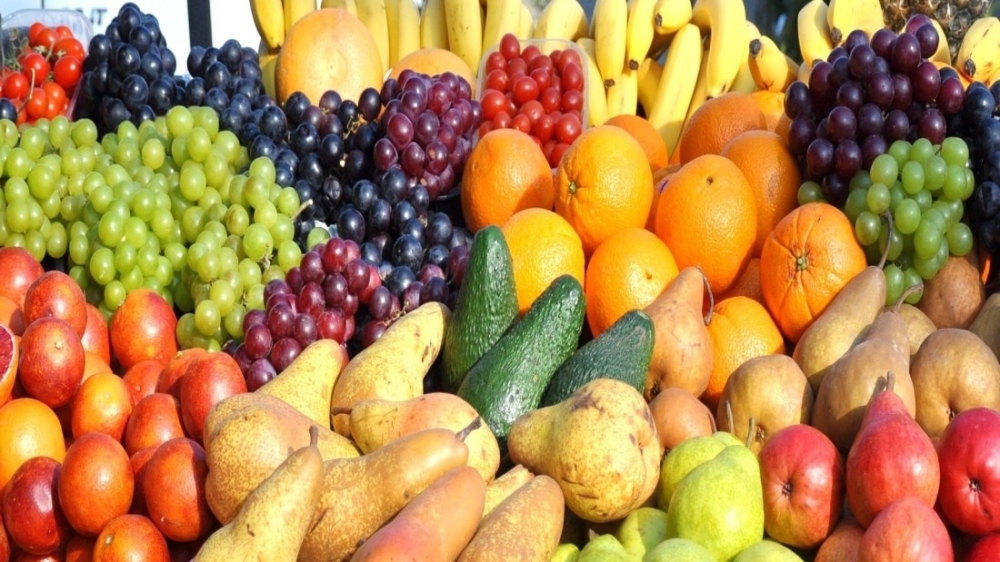Namibia only meeting 4% of local fruit demand
Oranges, grapes top locally-produced list
Fruit remains an untapped farming enterprise that may offer a variety of opportunities for many Namibians, Agribank said.
Namibia’s fruit production sector accounts for about 4% of local production, a mere 732 tonnes compared to an estimated 20 282 tonnes imported from other countries to meet local demand.
This is according to a study conducted by the Namibian Agronomic Board.
Agribank’s technical advisor for crops and poultry Hanks Saisai said most fruits consumed in Namibia - such as apples, pears and bananas - are seldom produced here.
“Oranges and grapes are amongst the most supplied fruits from local producers.”
He said fruit commodities predominantly exported from Namibia consist of about 28 483 tonnes of grapes and 81 tonnes of mangoes.
“Moreover, in recent years, blueberries are among the popular fruits exported to the European market.”
Untapped
Growing fruits remains an untapped farming enterprise that may offer a variety of opportunities for many Namibians, Saisai said.
He said establishing a nursery that specialises in the production of certified fruit trees may offer a good niche market for apples, guavas, bananas, oranges, mangoes and lemons.
“If each fruit tree costs about N$40 for ungrafted seedlings on average and about N$120 for grafted seedlings, and a farmer were to produces 200 ungrafted seedlings, an income of about N$8 000 can be generated per annum.”
He said if a farmer produces 200 grafted seedlings over a one-year period and sells them for N$120 per seedling, an income of N$24 000 can be generated.
According to Saisai, another opportunity that can be exploited is the growing of fruit trees on a commercial basis to offer local markets with high-quality fruit trees.
Business scenarios
There are several business scenarios for a farmer who embarks on the production of fruits such as oranges, guavas and lemons, he said.
Firstly, Saisai explained that should a farmer prepare one hectare and plant orange trees to produce high-quality fresh oranges that will be sold to formal markets; 667 trees can be planted if the farmer implements recommended spacing of five metres between rows and three metres within rows.
“The trees will take about three years before they start yielding fruit, with each orange tree producing about six tonnes per hectare. Once the trees reach peak production, which is around years eight to 15, the yield will increase to an estimated 20 tonnes per hectare.”
He said with average farm gate prices of N$25 per kilogram, a farmer can realise an annual revenue of about N$500 000 from the sales proceeds of oranges.
This is according to a study conducted by the Namibian Agronomic Board.
Agribank’s technical advisor for crops and poultry Hanks Saisai said most fruits consumed in Namibia - such as apples, pears and bananas - are seldom produced here.
“Oranges and grapes are amongst the most supplied fruits from local producers.”
He said fruit commodities predominantly exported from Namibia consist of about 28 483 tonnes of grapes and 81 tonnes of mangoes.
“Moreover, in recent years, blueberries are among the popular fruits exported to the European market.”
Untapped
Growing fruits remains an untapped farming enterprise that may offer a variety of opportunities for many Namibians, Saisai said.
He said establishing a nursery that specialises in the production of certified fruit trees may offer a good niche market for apples, guavas, bananas, oranges, mangoes and lemons.
“If each fruit tree costs about N$40 for ungrafted seedlings on average and about N$120 for grafted seedlings, and a farmer were to produces 200 ungrafted seedlings, an income of about N$8 000 can be generated per annum.”
He said if a farmer produces 200 grafted seedlings over a one-year period and sells them for N$120 per seedling, an income of N$24 000 can be generated.
According to Saisai, another opportunity that can be exploited is the growing of fruit trees on a commercial basis to offer local markets with high-quality fruit trees.
Business scenarios
There are several business scenarios for a farmer who embarks on the production of fruits such as oranges, guavas and lemons, he said.
Firstly, Saisai explained that should a farmer prepare one hectare and plant orange trees to produce high-quality fresh oranges that will be sold to formal markets; 667 trees can be planted if the farmer implements recommended spacing of five metres between rows and three metres within rows.
“The trees will take about three years before they start yielding fruit, with each orange tree producing about six tonnes per hectare. Once the trees reach peak production, which is around years eight to 15, the yield will increase to an estimated 20 tonnes per hectare.”
He said with average farm gate prices of N$25 per kilogram, a farmer can realise an annual revenue of about N$500 000 from the sales proceeds of oranges.




Comments
Namibian Sun
No comments have been left on this article